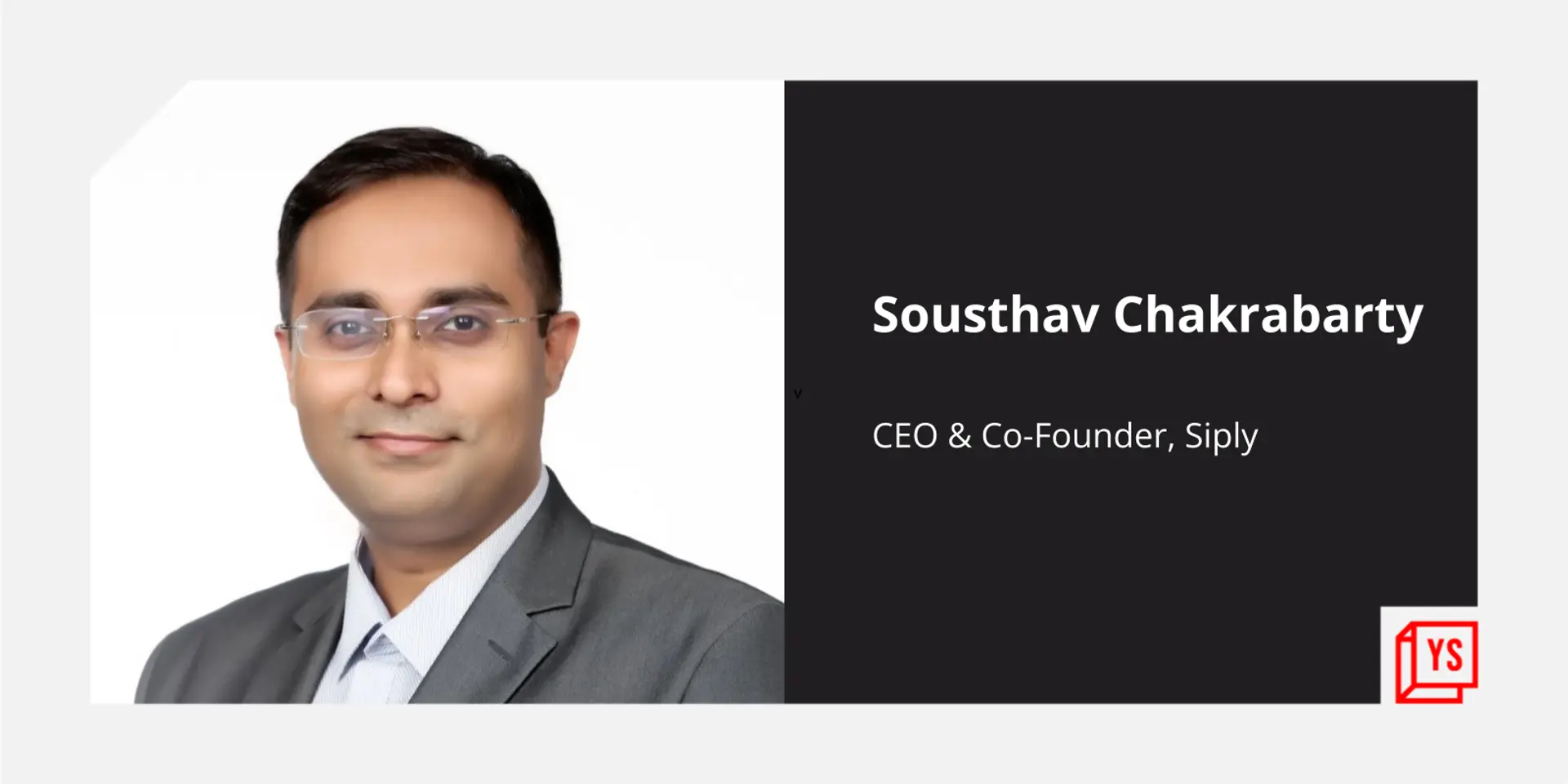How fintech startup Siply is helping 400M underserved Indians to save and invest
Bengaluru-based fintech startup Siply is a micro-savings app that aims to help India’s underserved masses save and invest. It has seen exponential growth in the last eight months, growing its userbase by 24X and revenue by 40X.
In 2010, Sousthav Chakrabarty was working as a managing director at a firm that helped high net worth individuals (HNIs) invest their money. However, when his father had a heart attack and needed surgery, he had to borrow money from an exploitative loan shark to cover the medical costs.
In a conversation with YourStory, Sousthav reveals, “When my father went through a medical procedure, I had to borrow money from a money lender at about 5 percent interest a month. He had a dual chamber pacemaker implant, and the pacemaker itself cost Rs. 4.5 lakh.”
While Sousthav was able to get himself out of that mess, he still remembers the financial helplessness that plagued that moment, as well as his childhood growing up. He said that he “didn’t find anybody giving support or guidance to our earlier generations.”.
In August 2020, Sousthav and his serial founding partner Anil Bhat decided to build their fourth venture together, and was created to “provide financial guidance for the next generation”.
Siply is a micro-savings app that aims to help India’s underserved masses save and invest from as low as Rs 1. The fintech startup is “making savings micro, flexible, and vernacular”.
With Sousthav’s 18 years of banking experience, including stints at Citibank and HDFC, and Anil’s 16 years of experience in tech, including a job at Yahoo and early roles at both Myntra and Cure.Fit, they believe they can build a fintech that can make a difference to 400 million Indians.
An awareness problem
According to Sousthav, Siply is not targeting the poorest Indians in the nation, but those middle-class individuals who just don’t have the guidance and tools to build a financial footprint.
For example, one of Siply’s biggest products is a micro-loan provided to employees in partnership with their employers. While the company disbursed Rs. 24 crore in February 2022 alone, Sousthav places the income of the average loan applicant at just Rs. 18,000 per month.
To Sousthav, their approach is different from the existing solutions for a simple reason. Siply aims to build products to address the specific problems their potential customers face.
“Siply’s moat is that we basically finetune these products, tailor these products for these audiences,” Sousthav says.
One example he shared was the technological difficulties of building a financial product for financially illiterate customers, who often don’t know English, and are using outdated smartphones that no longer receive Android updates.
Sousthav says Siply has to “deliver a product that is not technology friendly, to people who are not technologically savvy, and on a platform that is not technology friendly.”.
To get around this, Siply is extensively hiring in the tech department to solve what he believes is a purely tech problem, rather than a product or market issue. It has more than doubled its workforce in the last eight months since raising $4 million in August 2021, and is “aggressively hiring” in senior tech roles today.
Additionally, Siply has decided to build in vernacular languages for the customer, rather than trying to isolate those initial customers that can understand English. As of today, it has already built products and awareness content in 11 languages.
Building new investment avenues
According to Sousthav, the Indian public market growth since March 2020 has been touted as a success for financial inclusion, but the benefits are limited to those people with access and understanding of the market.
For the 400 million people that Siply is targeting, Sousthav believes that this boom has not made a difference. “They were struggling 10 years back, they’re struggling today, and they will probably be struggling 10 years from now,” he says.
Apart from the regular education and equity options, one of the first unique products Siply offered potential customers was a Smallcase investment into the 50 largest companies on Nifty for a minimum Rs 100 per unit.
This product was revolutionary for users because it leveraged the names of companies that many people have heard of, while reducing the financial requirement to entry significantly.
However, despite this move and the referral programme that helped Siply grow their userbase exponentially in the last six months, Sousthav says only one-sixth of its monthly users takes advantage of these investment vehicles.
Rather than blindly attempting to force the product onto the other five-sixths of its users, Siply is instead attempting to build new investment avenues that may interest them. A digital chit fund for a minimum Rs 250 per month was launched in January, while a free-to-open National Pension Scheme (NPS) account is in the works for an April launch.
As of now, Siply has facilitated six million people to either take out microloans worth a cumulative Rs 103 crore, or make cumulative investments of over Rs 175 crore.
With a $25 million Series A round nearly closed, including $10 million from QI Ventures agreed upon, Sousthav is looking to scale up what he deems a successful strategy so far. While he refuses to call Siply a neobank, he does provide a glimpse into what he wants the company to become.
The CEO describes the company’s future as “a de facto platform where people come to save money and have a better financial future”.
Sousthav’s passion has seen rewards as his fintech startup scales.
Siply has grown its userbase from 250,000 people to six million in eight months, and has increased its revenue, including both loans and investments, by 40X in the same period, according to Sousthav.
However, despite this rapid growth, there is still a genuine compassion that comes through when Sousthav is talking about Siply’s users.
“I wish people took more interest in not just the affluent segment, but also the aspirational segment. We call them the aspirational segment, not the struggling segment, because they are aspiring.”
Sousthav, Anil, and Siply seem to be on a mission to make sure that no one has to take out a 5 percent monthly interest loan to afford to keep their parents alive, and its rapid growth seems to show that Siply is going about it the right way.
Edited by Teja Lele




![[Startup Bharat] These 6 fintech platforms are bridging financial gap in non-metro cities](https://images.yourstory.com/cs/2/ba9e8080834311ec9e7e95cb06cf6856/Fintechfeaturesb-1648531906382.png?fm=png&auto=format&h=100&w=100&crop=entropy&fit=crop)




